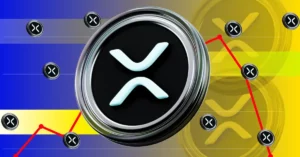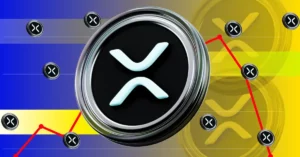
How to Use Escrow to Time-Lock and Secure Your XRP
By Solomon Odunayo – July 24, 2025
In a recent tweet, Jake Claver, Managing Director of Digital Ascension Group, emphasized the importance of using the escrow feature on the XRP Ledger (XRPL) to secure and time-lock your XRP holdings. As he astutely pointed out, this built-in mechanism enables individuals to take control of their assets without relying on third-party custodians.
The XRP Ledger’s native escrow function allows users to create an automated contract that restricts access to funds until specific criteria are satisfied. Unlike traditional financial instruments, XRPL does not require a middleman to enforce the terms; instead, it relies on the ledger itself. To initiate this process, users must define the amount of XRP to be locked, specify the release conditions, and identify the recipient. Once these conditions are met, the recipient can complete the transaction by submitting an EscrowFinish, at which point the funds are released and the escrow is removed. If the escrow expires without fulfillment of its conditions, the sender retains the option to cancel it using an EscrowCancel transaction to reclaim the funds.
The XRP Ledger’s escrow feature offers a variety of applications for financial planning. “It’s a way to protect your XRP from yourself,” Claver noted, highlighting the ability to delay access to funds until reaching a financial milestone. Other users may employ this mechanism to schedule future transfers automatically or enforce personal saving habits.
Notably, Ripple, a prominent player in the cryptocurrency space, has utilized this feature since December 2017. At that time, they placed approximately 55 billion XRP in monthly-released escrows to ensure predictability and transparency regarding their holdings. As of now, Ripple’s escrow balance has decreased by about 19 billion XRP due to gradual distributions.
XRP Toolkit facilitates the setup process for users seeking a straightforward way to implement this feature. Claver pointed out that the toolkit enables holders to register their wallets, manage funds, and configure escrows easily. By selecting the desired amount of XRP to lock and specifying the release date or condition, users can establish a time-lock on their holdings or automate transfers to another wallet at a later date. This level of control and automation mirrors Ripple’s escrow program on an individual scale, providing holders with a reliable means to manage assets strategically.
While using the XRPL escrow may have some limitations, such as potentially higher costs for small transactions due to increased transaction fees when incorporating crypto-conditions, users must also be aware that maintaining a required reserve balance is essential during the escrow period. Furthermore, timing precision might differ slightly since the XRP Ledger bases its release on ledger close times, which may vary by seconds.
By leveraging this feature, XRP holders can achieve greater control over their assets, align their holdings with long-term objectives, and avoid premature access to funds. As Claver stressed, this option is entirely integrated into the XRPL, providing a self-managed solution for disciplined financial planning.
Source: timestabloid.com


